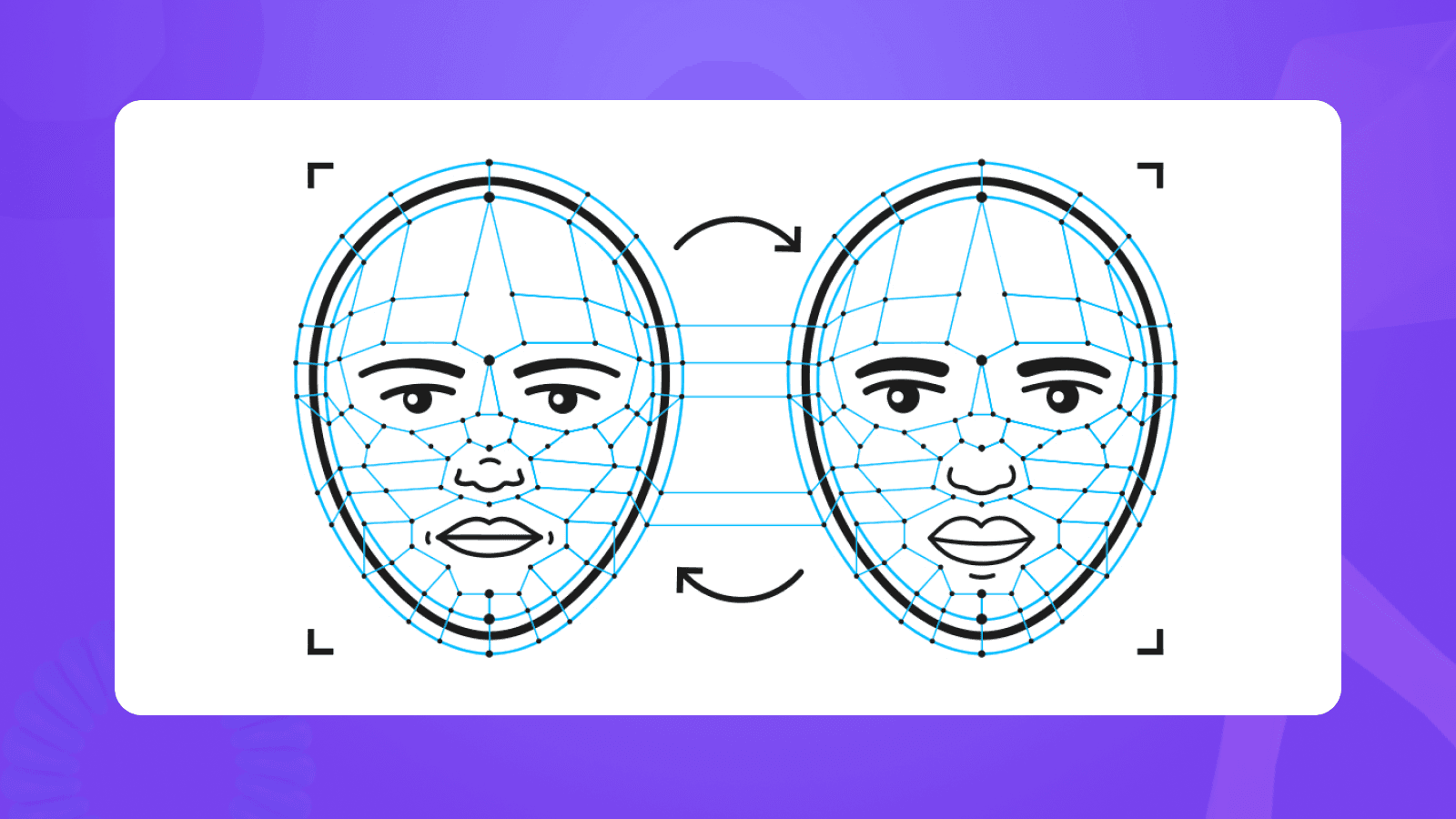Pause for a moment, and imagine a world where seeing isn't always believing - where your visual and auditory senses can be fooled by technology so advanced that fake video and audio-visual content seems terrifyingly real. Welcome to the reality (and unreality) of deepfakes.
Introduction to Deepfakes
Definition of Deepfakes and Their Significance in Today's Digital World
The term "deepfake", a blend of "deep learning" and "fake", speaks volumes about this computer-science field. Essentially, deepfakes refer to manipulated videos or other digital representations generated by sophisticated artificial intelligence (AI) techniques. Using machine learning algorithms called Generative Adversarial Networks (GANs), deepfake pornography creators craft realistic images or videos of events that never occurred.
Deepfake technology's meteoric rise has stirred-up indispensable discussions around their growing influence on news dissemination, social discourse, entertainment, and potentially even politics. In today's digital age, where anyone with an Internet connection can broadcast information worldwide instantly, the impact of such high-fidelity fabrications can no longer be ignored.
Famous Examples of Deepfakes That Have Garnered Attention
Distinctive examples highlight how deepfakes have captured audiences' attention over recent years:
One notable instance features a manipulated video where Facebook CEO Mark Zuckerberg seemed to claim total control over billions of people's stolen data.
Film director Jordan Peele used deepfake technology to produce a video allegedly showing then-President Barack Obama making derogatory comments about President Trump.
Celebrity-based deepfakes commonly show up online, one prominent example showcased actor Tom Cruise playing golf in uncanny realism during the COVID-19 lockdown period.
These instances underline the power of deepfakes in creating false narratives through synthetic media – and they're just a fraction of what this relatively young technology has achieved thus far. With continuous advancements in AI capabilities, it becomes even more vital to understand the intriguing, yet concerning implications of this evolving tech phenomenon.
History of Deepfakes
Evolution of Deepfake Technology From Its Inception to Present Day
The term "Deepfake", merging "deep learning" and "fake", was first introduced in 2017 by an anonymous Reddit user who started creating and sharing fake celebrity videos. However, the actual building blocks for what is a deepfake can be traced back to the late 1990s when academic researchers began exploring the concept of digital face replacement.
Fast forward to 2014, Google's groundbreaking research paper on FaceNet essentially became the bedrock for present-day deepfakes. FaceNet used convolutional neural networks (CNN), a form of machine learning algorithm, to mine facial expressions and dramatically boost facial recognition capabilities.
The technology took massive leaps with advancements in generative adversarial networks (GANs) around 2016. These advanced algorithms allowed machines to generate images or videos from random noise that were significantly more accurate than previously possible - shaping the backbone of today's deepfake production process.
Presently, deepfakes are impressively lifelike due to significant enhancements in AI and machine learning models over the years. Today they have become so sophisticated that distinguishing between authentic content and manipulated media often requires expert human judgment supplemented by specialized deepfake detection and tools.
Popular Use Cases and Advancements in Deepfakes Over Time
From entertainment to politics, artistry to personal misrepresentation - deepfakes have found myriad use cases since their inception:
Film Industry: A landmark debut came in 1977 with Star Wars' Princess Leia’s holographic message which showcased a basic form of video manipulation - a precursor for complex modern-day deepfakes.
Social Media Fun: Snapchat filters manipulating faces in real-time provided everyday users an early taste of face swapping technology.
Political Misinformation Campaigns: Meanwhile, alarming use cases arose where political figures were allegedly depicted performing actions or utterances not rooted in reality - a spreading wildfire that sparked immediate concern for our democratic processes.
Artistic Expression: On an upside, artists and film-makers have harnessed deepfake technologies for innovative storytelling methods, breathing life into historical figures or adding a twist to advertisement campaigns.
The evolution of deepfake technology from its initiation to the present day has been nothing short of revolutionary. However, with significant improvements to machine learning capabilities propelling its advancement and amplifying its use cases, it becomes even more crucial to establish stringent monitoring and regulation to ensure ethical boundaries are not overstepped. High technology can be as much a constructive tool as it can be destructive; along the trajectory of deepfakes' history, we've observed that starkly realized in both directions.
How are Deepfakes Created?
Explanation of the Underlying Technologies Used in Creating Deepfakes, Including Machine Learning and Artificial Intelligence
Let's crack open the technology behind deepfakes. Essentially, they are a product of cutting-edge machine learning techniques, specifically a form of artificial intelligence called Deep Learning.
Deep Learning imitates the working of our human brain using cells─ or neurons─ to gradually recognize patterns in data. It's composed of algorithms that construct artificial neural networks layered atop each other; hence 'deep'. When discussing what is a deepfake, this forms your answer's backbone.
To build a deepfake video or image, Generative Adversarial Networks (GANs) come into play. GANs embody two AI systems: one creates ('Generator'), while the latter judges ('Discriminator'). The generator spawns fake videos/images and attempts to outsmart the discriminator; meanwhile, the discriminator keenly learns to sequester real images from forged content.
Equipped with these instruments- Deep Learning and GANs- you're set to initiate crafting your own deepfake artistry!
Detailed Process of Creating a Deepfake Video or Image
Embarking on creating a high-quality deepfake does demand meticulousness and time but deftly guided by Artificial Intelligence makes it less onerous. Here’s an overview:
Data Collection: Assemble numerous images/videos related to your target face; say actor A whose face will be planted upon actor B's body.
Training: This phase engages your GANs where you feed thousands ─sometimes even millions─ pictures/videos into it for learning.
Generating Faces: After adequate training cycles known as epochs, amazing accuracy surfaces when Generator starts fabricating images mirroring those trained ones.
Swapping Faces: Next, deploy software which intelligently substitutes Actor A's face onto Actor B's footage frames resulting in finalized video which appears as though Actor A performed in lieu of Actor B.
Refinements: To amplify the true-blue effects, employ post-production techniques resembling color correction and blending.
Challenges and Limitations Involved in Creating Realistic Deepfakes
Despite deepfake's superior technology, perfecting it unveils a bouquet of challenges:
High-Quality Data Dependency: An impressive set mandates copious high-resolution pictures/videos from multiple angles in diverse lighting. Anything subpar significantly plummets the quality.
Computational Requirements: The rigorous training process requires powerful machines equipped with top-notch GPUs that can handle extensive data processing.
Time Expenditure: Equally demanding is the time devoted to producing realistic output; it runs into days or even weeks depending on data volume.
Skills Demand: Crafting a convincing deepfake also hinges upon specialized skills spanning computer science, machine learning, and video editing know-how.
While current tools have diminished some difficulties associated with generating deepfakes, achieving ultra-believable outputs remains daunting. However, the rise of more robust artificial intelligence tools is gradually simplifying this process.
Impacts and implications of deepfakes
In a world where the digital dominates, understanding the multifaceted complexities of deepfakes is indeed crucial. Broadly, the potential implications and impacts of this fascinating yet concerning technology can be both negative as well as positive.
Potential Negative Consequences of Deepfakes
A major consideration when addressing 'what is a deepfake?', lies in contemplating its potential misuse. Deepfakes open up certain Pandora's boxes that could wreak havoc if left unchecked.
Misinformation - The most immediate hazard associated with widespread use of deepfakes is the proliferation of misinformation. By creating highly realistic but untrue visual content, bad actors might manipulate public opinion, fuel conspiracy theories or create hoaxes causing unwarranted panic and mishaps.
Defamation - Highly lifelike impersonations made possible by deepfakes bear the risk of being misused for vilifying someone's character intentionally. These defamatory acts could lead to irreparable personal damage or professional disreputes.
Privacy Invasion - Deepfakes pose significant threats to personal privacy because they require large datasets – often without getting relevant permissions from those whose data is used.
All these factors combined create a dark backdrop against which we must consider the wide-ranging effects of deepfake technology.
Ethical Concerns Associated with Deepfakes
While pondering over 'what is a deepfake', it becomes impossible to overlook certain ethical concerns rife in their application. Apart from those mentioned above, profound moral questions arise about truthfulness, deception and trust in our digital society.
Deepfakes fundamentally challenge us on how conversations are conducted at both individual and societal levels, upsetting norms we've understood so far around authenticity and veracity! In essence, they can be weaponized to erode public trust in media outlets — an integral institution for democratic societies!
Positive Uses for Deepfake Technology
Despite pervasive negatives, it's practitioners and enthusiasts argue that when used creatively and responsibly, deepfakes hold exciting potential in certain domains.
Entertainment - Film industry has been exploring potential of deepfakes for reducing costs and achieving unprecedented effects. It enables filmmakers to use footage or performances of actors who have passed away or are unavailable for shooting.
Art - Artists increasingly experiment with AI to push boundaries of their work in captivating ways. Creating dream-like visuals through machine learning algorithms offers intriguing new frontiers for digital artists.
As we move forward, striking a balance between harnessing the positives while curtailing the misuse effectively will be key in ensuring societal welfare amidst technological advancements like these. I believe controlling the 'double-edged sword' called deepfake is not just a technical challenge but also an ethical one — requiring collective efforts from technologists, lawmakers, educators and us users alike!
Detecting and Combating Deepfakes
As we delve into the world of deepfakes, it's incredibly significant to understand that these fabricated pieces of media can pose a major threat. Fortunately, tech-savvies around the globe are developing countermeasures swiftly to tackle this issue detect deepfakes head-on.
Methods and Techniques for Identifying Deepfake Content
While the sophistication of 'deepfake' technology continues to escalate, several techniques have emerged in recent years that offer hope in distinguishing real from fake content. Let me shed some light on them:
Micro-expression Analysis: Genuine human expressions exhibit minute facial movements which are usually hard to replicate artificially. Automated micro-expression analysis identifies these subtle discrepancies.
Eye Blinking Analysis: People blink between 15-20 times per minute naturally. Often, algorithms used for creating deepfakes struggle with mimicking blinking behavior, making this a useful detection indicator.
Forensic Analysis: This involves scrutinizing videos or images pixel-by-pixel for abnormalities or inconsistencies typically left behind by AI models.
However, it's important to remember that these methods aren't entirely foolproof given the exponential development pace of deepfake technology.
Technological Advancements in Detecting and Preventing the Spread of Deepfakes
As an answer to 'what is a deepfake,' I can proudly add that even as deceptive deepfakes evolve, so do our defenses. Advancements are being made continuously owing largely to machine learning, computer vision technologies themselves – the very tools being used to create and for creating deepfakes!
Think of automated systems employing Artificial Intelligence (AI) to scan content across digital platforms swiftly and efficiently identify potential deepfakes based on pattern recognition.
Moreover, researchers globally are experimenting with 'adversarial networks' where one neural network first creates a synthetic video while another tries spotting its fallacies – thus improving both generative abilities and detection strategies over time.
Role of Individuals, Social Media Platforms, and Governments in Combating the Spread of Harmful or Malicious Deepfakes
The last lines of defense against malicious deepfake content are individuals, social media platforms, and governments. Here's how they can partake in quelling this rising digital menace:
Individuals: Gaining knowledge about what is a deepfake and staying informed of existing detection techniques greatly helps discern reality from counterfeits.
Social Media Platforms: Tackling deepfakes at the source – these platforms can deploy advanced detection tools to scrutinize every piece of posted content for anomalies.
Governments: They play a critical role in establishing regulations controlling the creation and distribution of damaging deepfakes while nurturing healthy discourse on privacy rights.
By intertwining technological advancements with proactive participation from society at large, it's possible to mitigate much of the harm posed by threatening deepfake technology. Remember, staying informed equates to staying protected!
Legal Considerations Surrounding Deepfakes
Deepfake technology, without a doubt, comes with its set of legal quandaries. The legislative bodies across the globe have taken diverse stands on this issue.
In the United States, the production and dissemination of deepfakes are neither explicitly illegal nor entirely sanctioned. A handful of states including California and Texas have enacted laws that target deepfakes specifically. The pertinent law in California grants individuals the right to sue if their voice or image has been manipulated deceptively within 60 days before an election or if it’s used in pornographic content without their consent.
Contrastingly, China has approached the issue more broadly by implementing a blanket ban on deepfake videos unless they are clearly labeled as such. Additionally, producing malicious defamatory deepfake material can serve jail time under Chinese law.
The European Union (EU) is also grappling with this issue but currently doesn't have any dedicated laws addressing "what is a deepfake" phenomenon at large scale. However, victims can seek redress under Right to Erasure or "Right to be Forgotten."
Ethical Questions about Regulation and Censorship in Relation to Deepfake Technology
As related laws continue evolving globally, we remain shrouded with several ethical dilemmas exploring parameters between free speech and safeguarding from harm:
Artistic expression Vs Deceptive manipulation: While some posit that creating deepfakes falls into artistic creativity which could potentially be stifled by stringent regulations, others disagree citing potential for exploitation.
Censorship Dilemma: Balancing legislation of harmful uses while ensuring freedom of speech remains an ongoing debate.
Data privacy concerns: Creating believable deepfakes requires access to abundant data points about an individual bringing privacy into question.
To sum it up, while understanding what a deepfake is crucial, comprehending its legal and ethical dimensions is also vital. These debates serve as key reminders that regulating digital technologies such as detecting deepfakes should be carried out responsibly while striving to balance rights and potential abuses.
Beyond videos: The Future of Deepfakes
The driven path of technological advancements continually opens up new horizons. With a deep dive into the domain, let's explore how deepfake technology transcends beyond mere imagery tricks or mimicking voices and submits a caveat for potential misuse in areas such as fabricating entire documents.
More Than Meets the Eye: Diversified Applications of Deepfakes
As we break out from the familiar confines of deepfake videos, these innovations are certainly not limited to deceptive alterations in multimedia content. Evidently enough, by extrapolating what is a deepfake from video manipulation to other digital spheres, the concept displays an extensive reach.
One primary application transcending from visual to audio pertains to voice cloning. Advancements in AI-aspects allow replicating a person's unique speech attributes - tone, pitch, accent – thereby enabling realistic conversations that seem practically indistinguishable. This can potentially set the stage for convincing scams based on spoofed phone calls or fostering malicious activities with highly personalized phishing attempts.
Another leap forward projects an alarmingly wider scope - generating fake textual content or creating bogus documents. Complex machine learning models can be trained using training data on writing styles, individual word preferences, phrases usage over time resulting in fabricated writings that bear stark resemblance to authentic ones. Misrepresentation becomes markedly intricate when it feeds subjective biases within its production process; false narratives might subtly validate people’s pre-existing beliefs while discrediting others without providing authentic evidence.
Potential Risks and Path Ahead
While exploring these extended avenues comes with benefits like customized learning tools or immersive gaming experiences by making characters sound more human-like– questions about security vulnerabilities ignite concern.
Accountability issues surface as tampering with vocal clones could lead to incredibly harmful consequences like marred reputations and privacy intrusions if misused for spreading misinformation or sowing discord which may instigate unwarranted societal impact.
In regardsto document fabrication utilizing deepfake technology, fake news articles could severely impact public perception and decision making. Fake textual content might be more potent than a deepfake video or audio clip– as written narratives possess their own creditability over media contents.
As we unravel these probable future scenarios of what is a deepfake, it puts forth the need for vigilance as much as progress. It's ever so crucial to counterbalance technological strides with robust security measures, advocating transparent use and pushing legal boundaries keeping a human-first perspective at heart.
Educational and Awareness Campaigns
In our technologically advanced society, one key aspect of grappling with the issue of deepfakes revolves around education and awareness. Understanding what a deepfake is alongside its potential impacts is crucial.
Importance of Educating the Public about the Existence and Consequences of Deepfakes
As I see it, public understanding and awareness of deepfakes can act as an effective first line of defense against nefarious usage. Raising consciousness about these skillfully synthesized productions can stand strong against their potential spread, impact, and resulting fallout.
Allow me to clarify why education on this matter is vital:
Encourages Discernment: Greater knowledge prompts critical probing before sharing or acting on perceived information from media content.
Inspires Caution: Consciousness about deceiving manipulation techniques encourages necessary skepticism when consuming digital content.
Promotes accountability: If equipped with facts about identification cues related to deepfakes, users are more likely to report suspicious activity.
These elements cumulate in powerful, self-censoring tools that every individual internet user should bear. Yet teaching such important skills requires well-guided educational routes.
Initiatives and Programs Aimed at Raising Awareness and Fostering Media Literacy Skills
Media literacy - capacity to identify different types of media production techniques - for all generations becomes an exigency particularly facing the emergence of manipulating technologies like deepfakes.
Multiple initiatives have been launched targeting that specific need. Allow me to highlight a few:
In partnership with Jigsaw (a unit within Alphabet), The New York Times released 'Operation Infektion', aimed toward educating people on the history—and widespread influence—of false information campaigns.
MediaWise for Seniors: A project by Poynter Institute focusing on MTurk adults over 50—a group more likely fall victim to deceptive news copy—guiding them how to discern between authentic and fraudulent digital content.
Sensity AI (formerly DeepTrace Labs) devotes its activities towards unmasking deepfakes, regularly publishing updates on the technology's evolution and running awareness campaigns.
Embracing such hopeful initiatives—imparting crucial knowledge for navigating the internet discerningly and safely—is fundamental for an empowering response to challenge posed by deepfakes. After all, with great power, comes greater responsibility!
Summary of Key Points Discussed in The Content Outline
To start with, to understand the term 'deepfake', we looked into its definition and roots. Then, we delved into some famous instances where deepfakes have made headlines. Throughout our exploration of what is a deepfake, we reflected on the evolutionary journey - from an innovative concept to advanced usage.
Following that, detailing the creation process was essential for understanding the fascinating technology behind it: artificial intelligence and machine learning. It's undeniable that crafting realistic deepfakes has its challenges, pointing to intriguing limitations within this cutting-edge tech sphere.
Our focus also pivoted towards analysing both sides of their impact - negative aspects like misinformation and privacy breaches contrasted against positive ones such as in entertainment or voguish art forms. Always remember that every coin has two faces; it is especially true when exploring what is a deepfake.
The next phase brought us through techniques and advancements implemented for detecting these hyper-realistic creations. Trust me, deciphering real versus deceitfully crafted content isn't a cakewalk! But don't fret; everyone can play a role in combating malicious deepfakes - individuals, the tech companies and giants, even governments.
The debate around laws concerning deepfakes taught us how legal perspectives differ across countries- uncovering many ethical dimensions to ponder upon regulation and censorship policies surrounding this technology.
Deepfake use goes beyond videos; voice manipulation or fake documents demonstrate potential risks involved with expanding applications of this technology. Constant vigilance seems like the mantra of the digital age!
In closing stages of "What is a Deepfake?", emphasis was laid on education campaigns – crucial initiatives teaching people about possible repercussions while fostering media literacy skills among netizens worldwide.
Final Thoughts on The Future Implications And Impact Of Deepfake Technology
As I conclude our journey in understanding what is a deepfake, I find myself amazed yet cautious about its future implications. The advent of deepfake technology offers unprecedented opportunities for innovation in various fields, such as filmmaking, gaming, or virtual reality environments. But it isn't devoid of potential pitfalls; its misuse could wreak havoc on personal lives and society.
Nonetheless, humans developed this technology; hence, it's up to us to use it responsibly and manage its outcomes adeptly. Continuous developments in detection technologies alongside effective regulation will play a vital role in keeping the undesirable impacts at bay while allowing legitimate uses to flourish.
As we navigate through this ever-advancing digital seascape - learning about complex tech like deepfakes, honing our media literacy skills, staying vigilant against possible misuses is becoming more critical than ever. Keep exploring with an informed mind and a discerning eye- that's my final advice to you!
Ultimately, the deepfake phenomenon teaches us one poignant truth: With great technological power comes greater responsibility!














